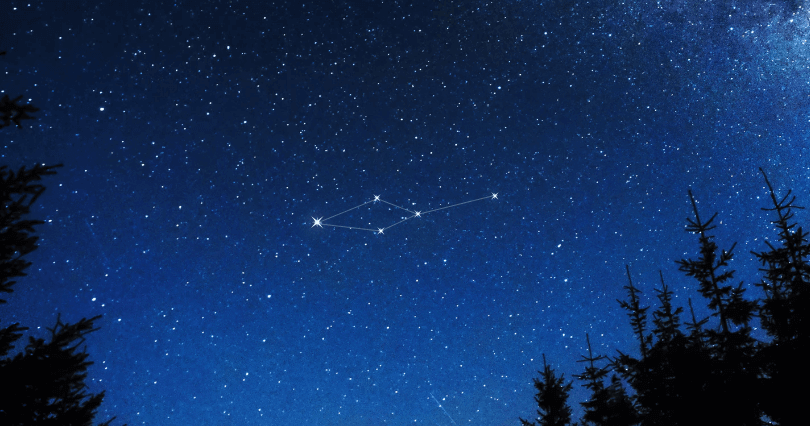Leo Minor Constellation

The Little Lion or Leo Minor is a small constellation in the northern hemisphere. It was discovered recently and it contains only one bright star – Precipua. In this constellation, you may also find numerous binary stars. This constellation is bordered by Leo and Cancer Zodiac constellations, Lynx and Ursa Major. The best time to look for it is around Springtime in the latitudes 90° North to 40° South.
Hevelius was the one who spots it first in 1687. By using a telescope. He told that Leo Minor is the constellation of faint stars between Zodiac Constellation Leo and Ursa Major constellation.
That made Leo Minor one of the seven new constellations that were officially recognized by IAU and listed later on with 88 modern world-known constellations. There aren’t any bright stars that are part of this constellation, and it has only 2 main stars in its asterism. English astronomer Richard A. Proctor tried to rename this constellation in the 1890s to Leaena, or the Lioness, to make the name shorter and easier to spot on the map. This suggestion wasn’t taken well, and the other astronomers preferred the term Leo Minor for this constellation better.
How to spot Leo Minor constellation?
Leo Minor is a small, faint constellation in the northern sky, with only one star brighter than fourth magnitude. Leo Minor is visible to all observers on a northern and southern hemisphere at latitudes between +90° and -45° and is best seen during the month of April.
Mythology of the Leo Minor constellation
Leo Minor is a new constellation and therefore aren’t any ancient mythology stories associated with it. If you look at the chart, you will spot no Alpha star in it.
Major stars in Leo Minor constellation
Leo Minor is the 64th constellation in size located in the second quadrant of the northern hemisphere. Leo Minor is located between Ursa Major on the north, Cancer Zodiac constellation to the southwest, Lynx constellation to the west, and Leo Zodiac constellation, which represents the larger lion, to the south. Notable deep sky objects in Leo Minor constellation are Hanny’s Voorwerp, and the interacting galaxies Arp 107.
The brightest star in the constellation is 46 Leonis Minoris (Praecipua), and the nearest star is the binary system 11 Leonis Minoris.
Leo Minor belongs to the Ursa Major family of constellations, along with Boötes, Camelopardalis, Canes Venatici, Coma Berenices, Corona Borealis, Draco, Lynx, Ursa Major, and Ursa Minor.
Leo Minor does not contain any Messier objects and there is only one meteor shower associated with it - The Leo Minorids that takes place every October from 19th to 27th. The meteor shower is linked to the comet C/1739 K1.
Choose your package
-
Lifetime Entry in Star Catalog
-
Guaranteed visible from your location
-
Star Finder app access


-
Free & express shipping available
-
PDF Emailed in Seconds
-
Everything from a Standard Star package
-
Choose a Star Constellation
-
Easier to find in the Sky




-
Free & express shipping available
-
PDF Emailed in Seconds
-
Everything from a Standard Star package
-
Name Two Stars together
-
Extra bright and Unique 2-Star Pair






-
Free & express shipping available
-
PDF Emailed in Seconds



